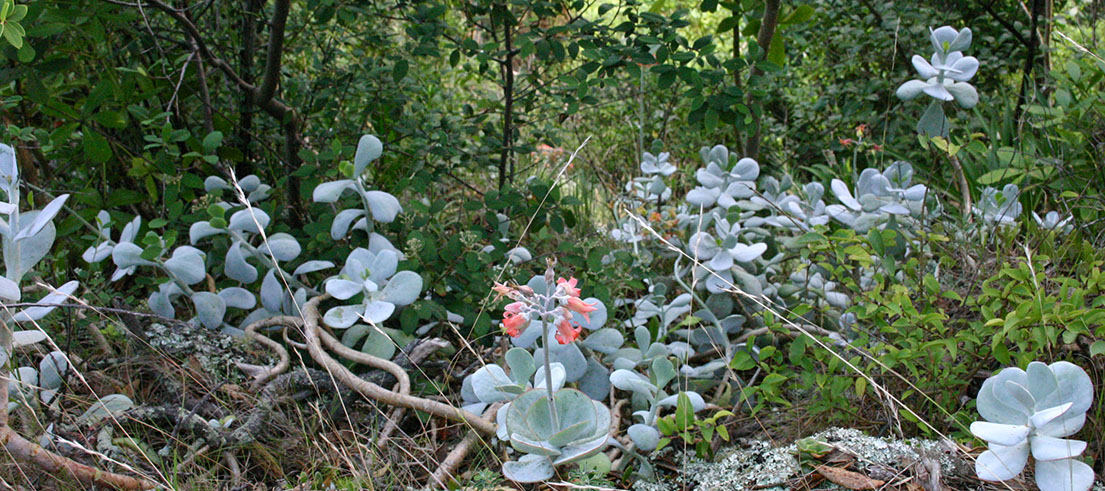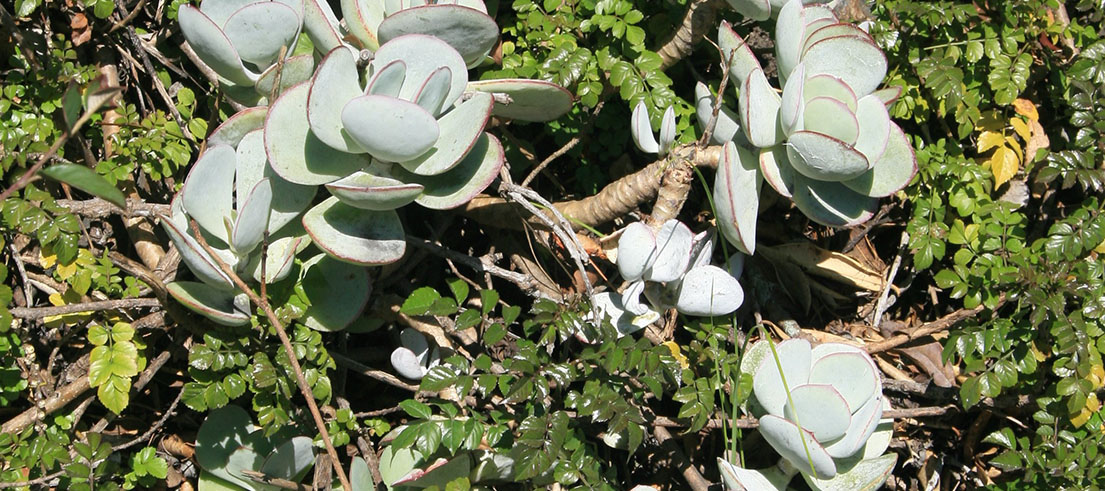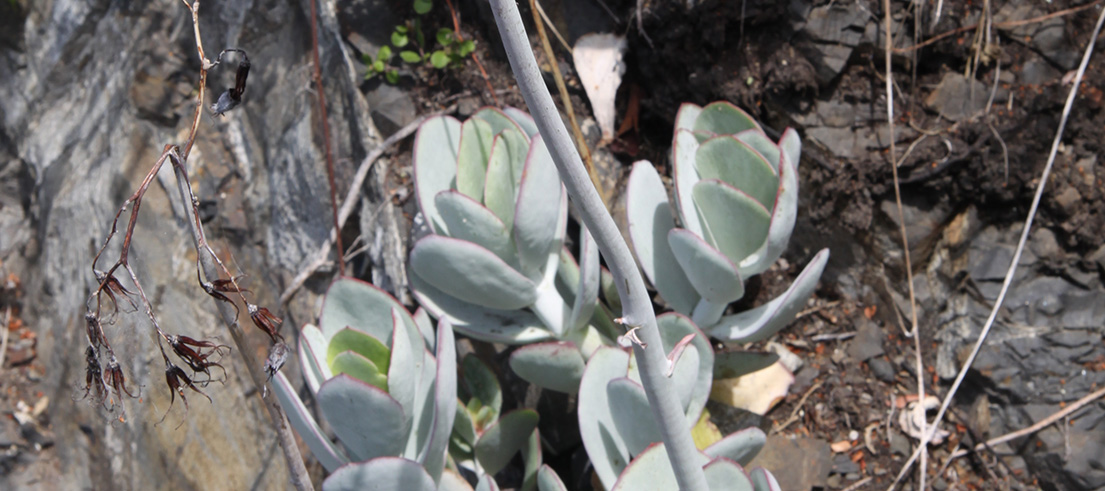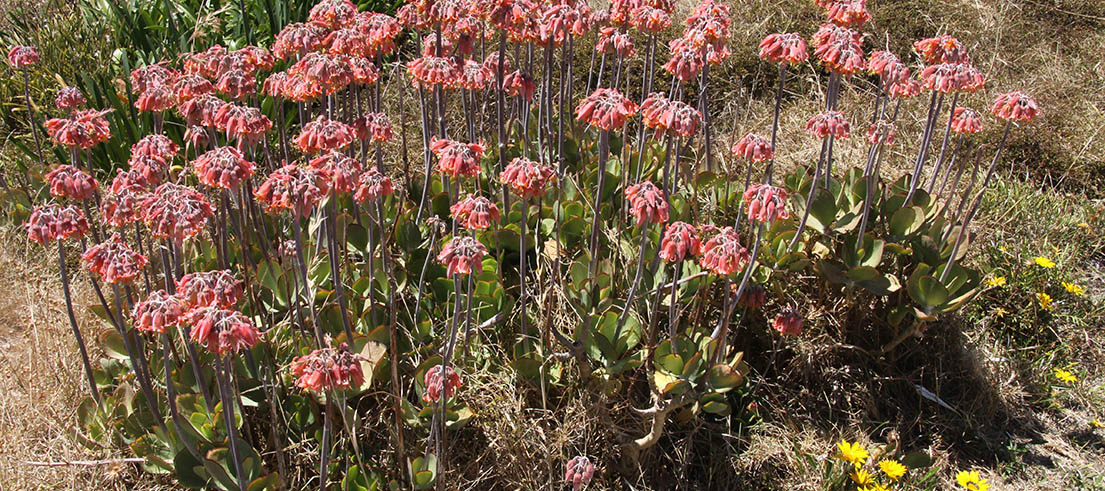Pig's ear is a succulent with a clump-forming sub-shrub standing less than a metre tall. It displaces native vegetation.
Description
- Leaves are grey-green with red margins.
- Flowers are bell-shaped and can be orange, red, or pink and borne on stems less than 50cm tall from December to June.
- Seeds dispersed by wind and gravity. Vegetative spread from fragments.
- Habitats include coastal cliffs, rocky outcrops, banks, dunes, scrub, grasslands, and pastures.
What you need to know
Displaces native coastal vegetation. Can form dense clumps in coastal ecosystems.
Management approach
Pig's ear is declared an unwanted organism by the Ministry for Primary Industries (MPI) because it is capable of causing harm to the natural environment, physical resources or human health in Aotearoa/New Zealand.
These species pose a high risk to our environment, economy, recreation, and cultural values.
Rules
Any species declared a pest, including unwanted organisms, cannot be sold or be in a place where plants are being sold. Pest plants cannot be propagated, bred, multiplied, communicated, released, caused to be released, or otherwise spread.
If you see pig’s ear, we want to hear about it. Please report your sighting, and attach a photo for our team.
Control
Site management
Follow up treated areas three times per year. Encourage natural regeneration of native plants or replant treated areas where possible after two to three treatments to establish dense ground cover and minimise reinvasion.
Physical control
- Dig out by hand. All leaves, stems and roots need to be removed to prevent re-infestation.
- Plant parts requiring disposal: All parts.
- Small amounts can be rotted in a covered water barrel or contact your local council for appropriate disposal locations.
Chemical control
- Foliar spray with 6ml triclopyr plus 1ml non-ionic surfactant per 1L of water.
- Foliar spray with 20ml glyphosate plus 2ml penetrant per 1L of water.
- Foliar spray with 0.5g metsulfuron-methyl plus 3ml penetrant per 1L of water.
Caution: When using any herbicide or pesticide please read the label thoroughly to ensure that all instructions and safety requirements are followed.
Biological control
Biological control is not currently available for this species.












